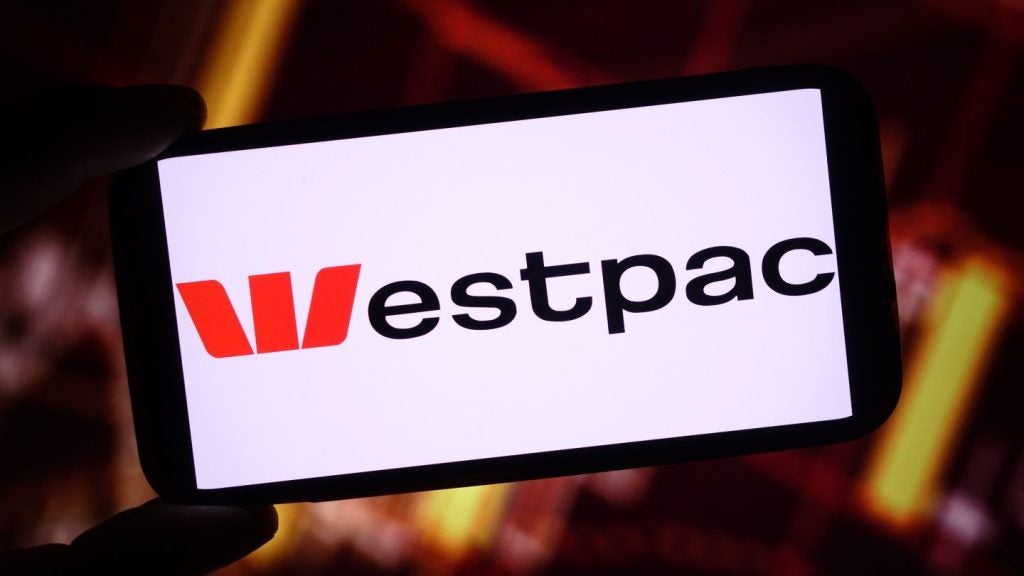
As Covid-19 drives Canadian consumers to digital banking, competition is growing between incumbent and digital challenger banks. Robin Arnfield reports
Digital entrants entice customers with interest-paying hybrid chequing and savings accounts, cashback on purchases, and digital mortgage applications, while incumbents counter with iPads, sign-up bonuses, and below-market-rate mortgages.
Canadian challenger banks have all reported considerable increases in customer acquisition and deposits, due to their high savings interest rates, as Covid-19 has led to growth in consumers banking, shopping, saving and borrowing online. In addition, consumers are using the cashback rewards paid by several challengers for essential purchases rather than for travel.
Canadian challengers fall into two categories: digital stand-alone subsidiaries of credit unions or smaller specialist banks; and prepaid card issuers. The first category includes EQ Bank, Motive Financial, Motusbank and Oaken, which leverage the staff, banking licences and core banking systems owned by their parents: Equitable Bank, Canadian Western Bank, Meridian Credit Union, and Home Bank, respectively.
Two prepaid card issuers, Koho and Mogo and a credit card issuer, Neo Financial, have partnered with banks to offer a range of additional products, while not holding banking licences themselves.
Investors have been attracted to these companies’ expanding banking capability and customer acquisition pull. Koho raised C$67m in financing in 2019, while Neo Financial raised C$50m in Series A funding and debt financing in December 2020.

US Tariffs are shifting - will you react or anticipate?
Don’t let policy changes catch you off guard. Stay proactive with real-time data and expert analysis.
By GlobalDataMogo is listed on Nasdaq and the Toronto Stock Exchange with a market capitalisation of C$141m in December 2020.
Canadian digital challenger banks commonly offer consumers a range of savings products with rates that are higher than those offered by the big banks. These include instant-access deposit accounts and Guaranteed Investment Certificates (fixed-term savings accounts with their own insurance separate to other insured bank accounts).
The GICs can either be held on a stand-alone basis or within the wrappers of Tax-Free Savings Accounts (TFSAs) and Registered Retirement Savings Plans (RRSPs).
Incumbents fight back
In response, three incumbents with the advantage of brand familiarity and branch presence, BMO Bank of Montreal, Scotiabank and TD, are each offering C$300 to customers opening new unlimited-transaction chequeing accounts, while RBC is offering a 10.2-inch iPad. HSBC is offering default-insured mortgages at a five-year variable rate of 0.99%.
Savvy consumers pick and chose from the financial products on offer from incumbents and challengers. “The stimulus for challengers to get a share of the market is the lure of lower fees and higher savings interest rates,” Christie Christelis, president of Canadian consultancy Technology Strategies International, said.
However, most consumers prefer to use incumbents as their primary bank where they receive their salaries and pay bills, while using challenger banks for savings.
The drawback of this approach is that the challenger bank doesn’t have a complete picture of their customers’ finances, said Celent analyst Stephen Greer. “Consequently, the challenger bank can’t easily offer them additional products or value-added insights into their finances,” he said.
Open banking
The playing field between Canadian incumbents and challengers is set to level with proposed legislation for consumer-directed data. Inspired by jurisdictions that have adopted open banking such as the UK, the Canadian government has been edging towards introducing open banking.
In November 2020, the Department of Finance began the second phase of its stakeholder consultation on open banking, which was launched in 2019.
The second phase focuses on determining how regulators and the financial sector can mitigate data security and privacy risks associated with open banking, and will review governance, consumer control of personal data, privacy and security.
In November 2020, Canadian Innovation Minister Navdeep Bains tabled Bill C-11 which includes the Consumer Privacy Protection Act and the Personal Information and Data Protection Tribunal Act.
The legislation proposes ways of sharing customer data and mandating data portability. It gives Canadians the right to request data that companies have collected about them, and to move their data from one organisation to another, for example when changing banks.
Senator Colin Deacon, a member of Canada’s Standing Senate Committee on Banking, Trade and Commerce, said the new legislation represents a step towards open banking. “I think open banking is critical and is all about competitiveness,” he said.
Open banking will make it easier for digital challenger banks to on-board new customers by providing secure and consent-based access to account applicants’ existing financial data.
Unlike traditional banks, Canada’s digital challengers offer digital-only customer enrollment, using credit rating agencies for identity checks, instead of requiring customers to send them paper documents. But the digital account-opening and identity checking process would be facilitated by using interoperable open banking APIs.
“Open banking’s central benefit is that giving customers control over when and how they share their financial data will spur the development of the types of tailored products and services that create a more innovative and competitive market,” said Mahima Poddar, Equitable Bank’s SVP and group head of personal banking, who is responsible for
EQ Bank.
“Many important financial services innovations have happened in recent years in Canada, including the provision of exchange-traded funds (ETFs), robo-advisers, all-digital international money transfers, reverse mortgages and free credit scores. But many occurred outside the traditional banking sector, and all were created by innovators lacking access to consumer data to guide them,” Poddar said.
EQ Bank
EQ Bank’s strategy of attracting customer funds with its combined chequeing and savings account made 2020 a good year for the bank, as it benefited from accelerating growth in digital financial services.
In Q3 2020, EQ Bank acquired 25,000 new customers, leading to a 68% year-on-year rise in total customers. Monthly account openings in Q3 were almost three times EQ Bank’s 12-month average.
EQ Bank was launched in 2016 by Equitable Bank, Canada’s ninth largest domestically owned bank with assets under management of C$35bn. As of 30 September 2020, EQ Bank had 149,000 customers and C$4.3bn in deposits, up from C$2.5bn ayear earlier.
EQ Bank’s flagship is the Savings Plus Account, a hybrid chequing and savings account with a high interest rate, free transactions, no everyday banking fees, and no minimum balances.
The account provides an alternative to sweep accounts as funds on deposit earn interest while waiting to be used for bill payments and other transactions. The bulk of EQ Bank’s customer deposits are held in Savings Plus accounts, although it also offers GICs, TFSAs and RRSPS.
“We wanted to go to market with a different product from what is traditionally offered by banks,” said Poddar. “We said: ‘what if we get rid of the artificial construct of the chequing account and the savings account?’ So, we created a hybrid chequeing and savings account with a high interest rate and no banking fees that lets you do the vast majority of your everyday banking with EQ Bank.”
While the Savings Plus account doesn’t include an ATM/debit card, EQ Bank has made it easy for customers to move money into and out of their accounts. “We offer unlimited free Interac e-Transfers and we enable EFT (electronic fund transfer) pull and push payments at no cost,”, Poddar said.
Interac e-Transfer is a P2P payment service operated by Canadian debit network Interac, while EFTs are pre-authorised bank transfers taking place over payment infrastructure operator Payments Canada’s clearing and settlement network.
EQ Bank is the first Canadian bank to integrate TransferWise’s API so customers can send money abroad direct from the EQ banking app instead of having to log into TransferWise.
“As we have a direct API integration with TransferWise for international transfers, we withdraw the funds instantly from the customer’s account, and send them immediately to TransferWise,” Poddar said. “Due to the amount of business we do with TransferWise, we pass on volume discounts to clients.
“Our customers are generally cashless and most use rewards-based credit cards which they pay off, so there isn’t a real demand for debit cards,” said Poddar. “But we’re developing a payment card that we hope to launch in 2021. Customers will be able to use the card to get cash from ATMs, at the point of sale, or for e-commerce. We’re going to partner with one of the payment networks to offer the card, which will have a rewards element built into it.”
While EQ Bank doesn’t offer any lending products, its parent Equitable Bank provides reverse mortgages which are sold through the bank’s mortgage broker network.
“EQ Bank is experimenting with direct-to-consumer reverse mortgages, enabling customers to apply for and get commitments entirely digitally for reverse mortgages,” said Poddar.
EQ Bank aims to offer higher savings rates than those paid by the big Canadian banks. Because Equitable Bank specialises in lending to people who don’t meet the big banks’ normal underwriting criteria, such as self-employed people, it can pass on some of the higher interest rates it charges such customers to EQ Bank savers.
“These are high-quality credit applicants, but, because applicants are self-employed and maybe keep their money in their business for tax reasons, they don’t meet standard income requirements,” said Poddar. “EQ Bank’s target market is people aged 25-45 in urban and suburban areas and generally with above average income and post-secondary education.”
“Traditionally, you needed to have a minimum level of savings before the perceived barriers to opening a new account made sense. We’re finding that this is no longer true with Covid-19 – there’s so much more openness to digital-only banks,” he said.
“We’re seeing people researching the interest rates offered by big banks and comparing them to those of digital-only banks. We have quite a wide variety of customers joining, but we’re seeing a ton of growth among people who are 65- plus, and on average have higher balances.”
Poddar said that EQ Bank’s fastest growth is among 18-25 year-olds. “We always saw growth in this age group, but they weren’t a big part of our customer base. But we’re finding that 18-25 year-olds are value-conscious. Overall, we’ve seen 300% growth year-on-year in customer sign-ups during Covid-19.”
Koho
Toronto-based Koho’s prepaid Visa cards pay cashback and function like bank accounts. Koho’s basic card has no fees and pays 0.5% cashback on all purchases, making it an attractive alternative to the high chequing account fees charged by big Canadian banks.
Consumers can also obtain a premium card paying 2% cashback for C$84 a year or C$9 a month. According to the Globe & Mail, as of September 2020 Koho had 175,000 users.
CEO Dan Eberhard plans to expand the Koho card’s reach by linking it to savings and investment products. Koho’s interest-paying savings account is due for launch in Q1 2021, and Eberhard expects all the firm’s existing prepaid card customers to migrate to the new account.
“The principle of what we are doing with the savings account is eliminating the complexity of a separate chequeing account, a savings account and an investment account,” said Eberhard.
“We’re starting with a savings product, but intend to add an investment product to the account. We plan to link the savings account and associated card to a range of assets such as investments, cryptocurrency or cash savings, which could be held at another FI. Savings account-holders will be able to spend directly from their account.”
“It’s a clever marketing approach from Koho to reward people signing up for a savings account,” said Aite Group retail banking and payments research associate Francisco Javier Alvarez-Evangelista.
Funds deposited in savings accounts will be held in a trust account at a major Canadian bank by ShareOwner, a subsidiary of Canadian wealth management firm Wealthsimple. The deposits will be protected by the Canadian Deposit Insurance Corporation (CDIC).
Koho currently processes C$2bn a year in prepaid card transactions, said Eberhard. The Koho prepaid card account functions like a bank account in that customers can use it to pay bills, send Interac e-Transfers, and receive their salaries and government benefits.
Funds are held by Vancouver-based People’s Trust, a federally regulated and CDIC-insured bank.
Obtaining its own banking licence isn’t a top priority for Koho, Eberhard said. While open banking would benefit Koho in that it would make it easier to identify account applicants using shared data from their existing bank, what Eberhard is really interested in is direct access to Payments Canada’s planned real-time network.
In 2022, Payments Canada will launch the Real-Time Rail, which will provide instant 24/7 payments for consumers and businesses. Part of Payments Canada’s payments modernisation program, the RTR aims to spur the development of new payments services by incumbent banks and new entrants.
Under new legislation proposed by the Department of Finance, non-bank payment service providers would be able to become associate members of Payments Canada, which would grant them direct access to the RTR.
Currently, only deposit-taking FIs can become Payments Canada members and enjoy direct access to its core infrastructure. This legislation would be significant for Koho, because of its focus on transactions.
Eberhard said that around 60% of Koho’s transaction volume growth has been driven by people using its prepaid card as their primary account.
“Our demographic is older millennials, people who are just over 30 and are making C$40,000-C$80,000 a year,” he said. “Canada’s banking infrastructure was set up for the Canadian banks, and that’s especially true for payments relationships,” said Eberhard.
“The Real-Time Rail, if implemented correctly, should allow Koho and other fintechs to participate and have consistent, reliable access to real-time payment gateways. There is no payment infrastructure now in Canada for non-FIs. Currently, we have to rely on third parties to access payment services such as Interac e-Transfer as we don’t have direct access.”
Eberhard said that Koho is having conversations about applying for a banking licence. “But it’s incredibly complicated for a fintech to get a banking licence in Canada,” he noted. Koho also has credit products.
“Firstly, we offer an early payroll product, allowing customers to get a C$100 advance on their paycheque for free,” said Eberhard. “The uptake has been phenomenal, and now that we understand how the product works, we’re going to increase the amount you can get in advance.
“Secondly, we’re developing a credit-rebuilding product providing a fixed amount of money and reporting back to the credit bureaux, which will be considerably cheaper than any other credit-building loans on the market. We will charge a total fee of C$7 a month for each loan. A lot of the lending process is automated, so we’ve been able to massively reduce the cost.”
Motive Financial
In 2017, Canadian Western Bank (CWB), an Alberta-based bank serving business owners, renamed its online retail banking arm as Motive Financial. The stand-alone unit, which targets consumers, had previously been called Canadian Direct Financial.
CWB provides business owners with loans and day-to-day business and personal banking services, while Motive provides personal banking products across Canada to a wider customer base. “We run Motive as a separate digital challenger bank,” said Jeff Wright, SVP of equipment, digital and client solutions at CWB.
“Six months ago, we introduced fully digital on-boarding for new Motive accounts, and since November 2020 business owners have been able to apply totally online for CWB personal banking accounts. Currently, two-thirds of Motive applicants use a PC to open an account, with the rest using our mobile app.”
CWB is currently overhauling its digital systems, and in 2021 will introduce fully digital on-boarding for CWB business banking clients. “Over the next 12 months or so we’ll be replacing all of our online and mobile platforms across CWB and Motive to significantly enhance our client experience,” said Wright.
CWB has seen its total loan portfolio rise from C$22bn in 2015 to C$30bn in 2020, while its deposits have grown from C$21.2bn in 2015 to C$27.3bn in 2020. “We tripled the business in the last two years or so in Motive,” said Wright. In the year to 30 October 2020, deposits in Motive increased by 41% to C$1.1bn.
Motive offers the Cha-Ching low-fee chequeing account with an ATM/debit card, TFSAs, RRSPs, GICs and two different instant-access savings accounts. “Many clients prefer to have their money all in one place, as this makes it simpler,” said Wright. “Almost all our chequing account customers also have their saving accounts with us.”
Motive plans to launch a credit card in 2021 and is looking at offering loans. Currently, customers can only obtain loans through the parent CWB.
Motusbank
In April 2019, Meridian Credit Union, Ontario’s largest credit union and the second largest in Canada, launched Motusbank, a full-service nationwide digital-only bank.
Motusbank offers totally digital mortgage applications, riding on its parent Meridian’s mortgage application platform, plus direct access to a self-directed online discount brokerage and a wealth management robo-advisor providing ETFs. It also offers chequeing accounts, GICs, TFSAs, RRSPs and high-interest savings accounts.
“Motusbank is one of the first banks in Canada to offer fully digital mortgage applications,” said David Moore, Motusbank’s COO. “Currently, we only offer industry-standard mortgages through Motusbank. But we provide a number of non-standard mortgages through Meridian that we’re planning to bring over to Motusbank.”
Also on Motusbank’s roadmap for 2021 are an unsecured lending product, a credit card, and an advisor-based wealth management offering.
“We’re looking at piloting the advisor service in the first half of 2021,” Moore said. “While we want to have a strong credit card product, it needs to be profitable. The credit card space is getting increasingly difficult, as interchange rates have fallen, but rewards haven’t come down in the same fashion. So this is squeezing margins.
“Also, Covid-19 has led to credit card portfolios having a high provision for credit losses. There’s an expectation that, once government Covid-19 subsidies end, we’ll start to see a ramp-up in credit losses and personal bankruptcies.”
Oaken
Oaken Financial is the retail banking brand of Home Bank, a subsidiary of Home Capital Group which also owns Home Trust.
“When we launched Oaken seven years ago, we initially focused on providing GICs and savings accounts to people over 55 years old who are in retirement or approaching retirement,” said Benjy Katchen, Oaken’s EVP, chief digital and strategy officer. “Unless someone is very high-net-worth, that’s a very underserved segment in Canada.”
As of 30 September 2020, Oaken had C$3.87bn in deposits, up 18.3% year-on-year and up 5.3% from the end of Q2 2020.
Katchen said that Oaken, Home Bank and Home Trust have been substantially upgrading their technology platform.
“As a result, we will launch a completely revamped digital banking experience for Oaken customers in the first half of 2021. The new platform, which will be designed to be mobile-first, will enable us to launch new products and service enhancements at a faster rate than we were able to do in the past.”
Katchen said that these new products could include credit cards and chequeing accounts. Home Trust, which specialises in offering mortgages to people who have difficulty obtaining mortgages from the big banks such as the self-employed, also offers credit cards.
“It would be a natural extension to offer Home Trust credit cards to Oaken customers on our new digital platform,” said Katchen.
PC Money
President’s Choice Financial, which owns the PC Money bank account is Canada’s only supermarket bank. Owned by retailer Loblaw Companies, PC Financial also offers a range of Mastercard-branded credit cards.
Currently, PC Financial has 3m Mastercard customers with over C$3bn in loans outstanding.
PC Financial had a supermarket banking partnership with CIBC from 1998 to 2017, when CIBC launched its own stand-alone digital bank Simplii.
In September 2020, PC Financial launched the PC Money account, which provides a prepaid Mastercard and offers unlimited everyday transactions and no monthly fees plus PC Optimum reward points on transactions.
Customers can load funds into the account through payroll, direct deposit or via Interac e-Transfer. PC is one of Canada’s most popular reward schemes, with 18 million members and earning points at 4,500 locations including Loblaws supermarkets and Shoppers Drug Mart.
“We’ve always had our own banking licence,’ said PC Financial’s president Barry Columb. “But we don’t see ourselves as a big bank, a fintech or a challenger. We play into our own space, because we’re backed by a large retailer and are integrated into the retail experience.
“As a bank and a retailer, we had the credit card side of the retail payment process covered through our Mastercard products. More than half of payment transactions in Canada are on debit cards. So we knew there was a gap on the debit card side, where customers wanted to use their own money to pay for groceries, not credit.
“We felt we could fill that gap by offering another payment product, the PC Money account, that allows you to access your own funds and be rewarded with PC Optimum points.”
Columb said that PC Money customers may use another bank for full-service banking, but use their PC Money card for in-store and out-of-store spending and collecting rewards.
“That’s what we’re after, customers who use our retail franchise and value our rewards,” he said. “Uptake of PC Money surpassed our expectations for the first three months.”
PC Money leverages Mastercard’s prepaid technology for deposits and payment transactions, but has the attributes of a bank account such as bill payments, said Columb.
“We offer our customers savings goals for their account, and reward them for achieving these goals through PC Optimum points,” he said.
“In addition to rewards points on purchases, we offer bonus points for bill payments, setting up linked bank accounts, and direct deposit. While we offer overdraft protection on the account, we don’t have any other lending products tied to it.” PC Optimum points can be instantaneously redeemed against purchases in-store.
“During Covid-19, customers have been redeeming their PC Optimum points for essentials, and are less attracted to other types of rewards,” said Columb.
“So we thought it was the appropriate time to launch the PC Money account, as it would accelerate our customers’ rewards-earning potential, enabling them to get the essentials that they need.”
Because PC Financial has a banking licence and holds its customers’ deposits, there will be opportunities for it to develop lending and other payment products, said Columb.







